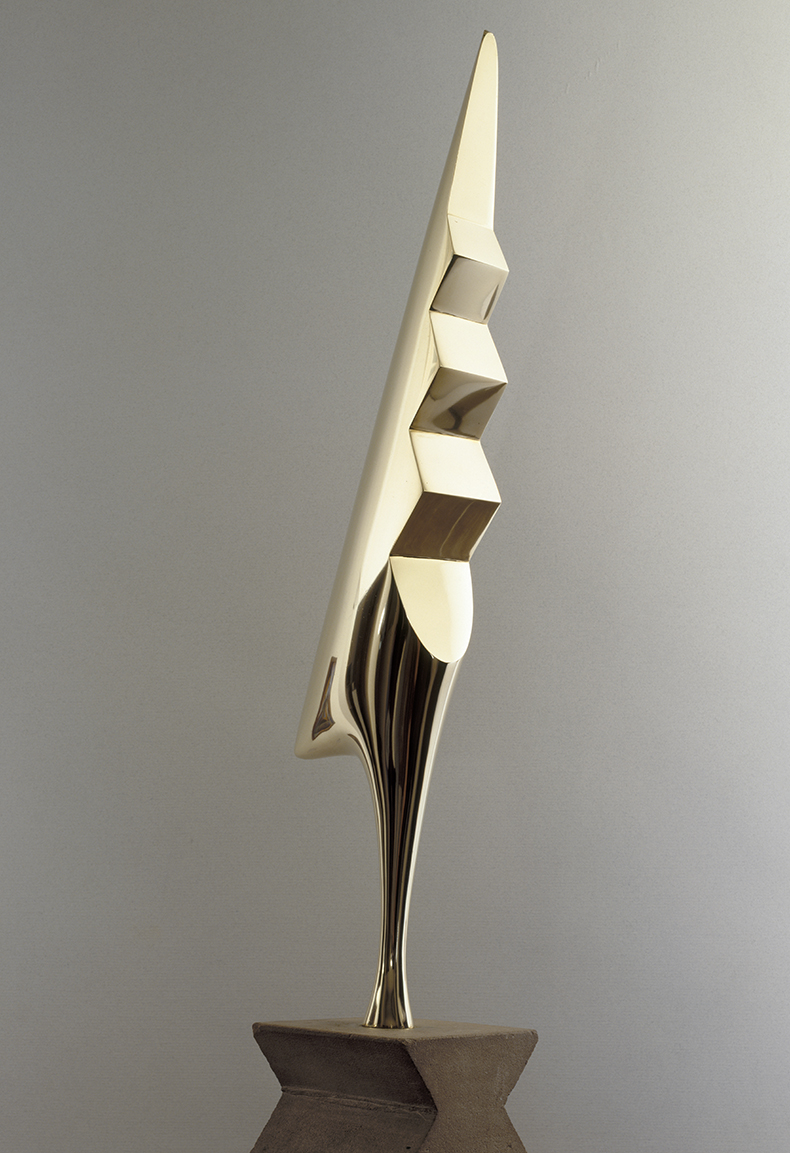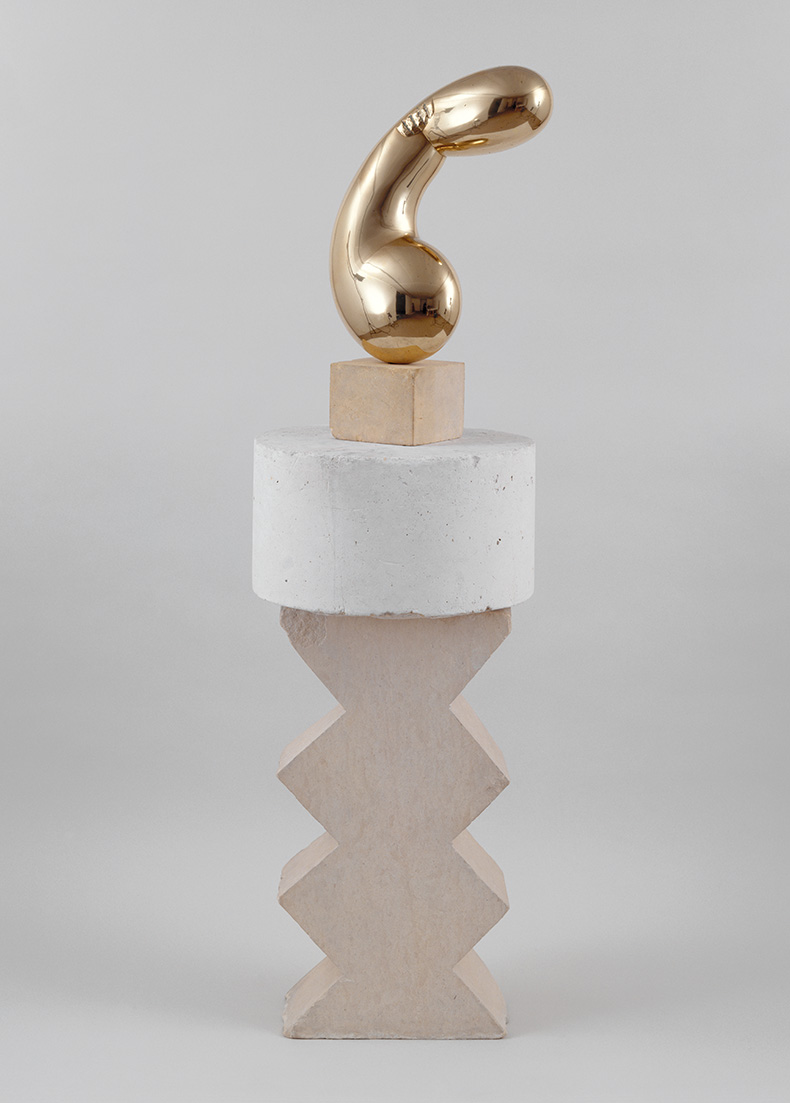From the June 2024 issue of Apollo. Preview and subscribe here.
Midway through the monumental Brancusi retrospective at the Centre Pompidou, in a collection of archival documents spanning the artist’s life, several newspaper clippings relating to his 1928 court case against the government of the United States are on display. The incident is well known: in 1926, Constantin Brancusi sent a version of Bird in Space to be exhibited at the Brummer Gallery in New York. Works of art were not subject to import taxes, but a customs official did not think Bird in Space looked much like a bird and taxed it at 40 per cent under ‘Kitchen Utensils and Hospital Supplies’. A judge ruled in Brancusi’s favour, but American newspapers remained sceptical. Most telling is an issue of the New York American, which captioned a photograph of Head of a Child with the line, ‘An Attempt at Simplicity Which Artist Brancusi and His Admirers Are Very Proud Of. The Custom House Experts Were Unable to Find Any Child Whose Head This Resembled.’
The copy-editors of the New York American had one thing right. The sculptor’s works seem to demand comparison to make sense, especially the more they are reduced to abstract figures. Appropriately, the Pompidou exhibition begins by placing key sculptures next to their likely inspirations. A limestone Danaïde by Brancusi from 1908–09, a woman’s head with a sketched-in face and bouffant hairstyle, sits next to an antique male head from Cerro de los Santos that had been on display at the Louvre a few years before. The two resemble one another in their rough stone work, but Danaïde also anticipates the surprisingly complex hairstyles of Brancusi’s later portraits. Torso of a Young Girl III (1925), made of onyx and formed like a smooth bladder bag, is placed next to a Keros head from the third millennium BC, made of marble and polished into the shape of a long fingernail, with a stark triangle for a nose.
This play of texture and smoothness appears in another pairing, between Auguste Rodin’s Sleep (1894), a woman’s head resting on roughly chipped stone, and Brancusi’s version with the same title from 1908. Rodin’s subject has delicate features: full lips, a fine nose, smooth face and finely chiselled hair. Brancusi’s figure is less feminine, with more pronounced chin and eyebrows, and a face that is only half distinguished from its base of stone. His sleeper seems more absorbed, more deeply connected to the natural element out of which it is formed. This sleeper is also, like much of Brancusi’s later work, androgynous.
The Cock (1935), Constantin Brancusi. Centre Pompidou – Musée Nationale d’Art Moderne, Paris. Photo: Adam Rzepka/Centre Pompidou, Mnam-Cci/Dist. Rmn-Gp; © Succession Brancusi – All rights reserved Adagp, Paris 2024

Brancusi is well known for his distillation of figures into the most suggestive, basic shapes. The exhibition’s clusters of pieces on one theme allow viewers to spot small details that distinguish them. The four versions of his Mademoiselle Pogany portrait (1912–33) look stylised, repetitive, almost alien from the front. The hair differs on each Pogany, however, sometimes coiled into a pretzel bun, sometimes cascading down like the back of an armadillo. Slight changes in the angle of the neck and hands make one Pogany seem graceful and dreamy, another self-protective.
Much of the exhibition is arranged to encourage viewers to draw their own comparisons, juxtaposing Brancusi’s sculptures with pieces that resemble them in style. However, the best analogy for any given work is not always clear. Does The Cock (1935), an angular, arrow-like sculpture that opens the show, recall the Romanian folkloric belief that roosters symbolise cunning and wealth? Or does its aerodynamic design suggest streamlined, ambitious modernity?
Born in the southern Romanian village of Hobita in 1876, Brancusi left home at the age of 11, worked as an apprentice to a cooper and a dyer, and took courses in sculpture at the School of Arts and Crafts in Craiova before enrolling at the National School of Fine Arts in Bucharest. He maintained an interest in Romanian peasant carpentry and wooden crafts throughout his career. These are represented in one area by a large farm gate made of oak from his home region of Oltenia, whittled with basic geometric patterns, and by a series of finely carved daily utensils, including a spoon with a handle in the shape of a rooster. Brancusi made his own oak doorframe for his studio in 1932–36, repurposing a bench for the doorposts. Several of his large wooden cups are here too, perfect half-spheres of linden wood with small circles for handles, rebellious in their impracticality – the cups and handles are filled in. An hourglass-shaped stool, like a cylinder sliced in half and joined at the curve, echoes the symmetry of the artist’s famous Kiss sculptures.
The Romanian section ends with one of his oak Caryatids (1943–48), a figure with sturdy, rounded legs, a soft, pregnant-looking torso and square head. It is set next to two 19th-century statues from Mali, which it resembles in its curves and elongated proportions. Scholars have argued over the extent of Brancusi’s debt to African art, but it is clear that he found a resonance between its craftsmanship and his own woodworking heritage in Oltenia. ‘Only Africans and Romanians know how to carve wood,’ he was quoted as saying.
Princess X (1915–16), Constantin Brancusi. Centre Pompidou – Musée Nationale d’Art Moderne, Paris. Photo: Georges Meguerditchian/Centre Pompidou, Mnam-Cci/Dist. Rmn-Gp; © Succession Brancusi – All rights reserved Adagp, Paris 2024

Brancusi’s close attention to the qualities of wood is visible throughout the exhibition, most closely in Torso of a Young Man (1923), a long cylinder made of a single piece of oak that forks at the bottom. The work is not obviously masculine or even human, but the grains, knots and splits in the wood suggest veins, a belly button, a crack. Quiet wit is evident here: the sexual ambiguity of the torso leaves its viewer searching for the phallus. Look at the bronze version of this piece straight on, and you might find that your distended reflection has become the torso’s erection.
Nearby, Princess X (1915–16) is a tall bronze phallus trying very hard to be a pregnant woman. Its polished surface playfully reflects the viewers walking around it in the gallery, in both its lower and upper bulbs. Their dark bodies give it texture, echoing a rough patch on the nape of the princess’s neck. The reflected crowd might be pubic hair, or locks around the face of a proud woman. Too expansive to be reduced to one sex, Princess X encompasses the world.
‘Brancusi’ is at the Centre Pompidou, Paris, until 1 July.
From the June 2024 issue of Apollo. Preview and subscribe here.



